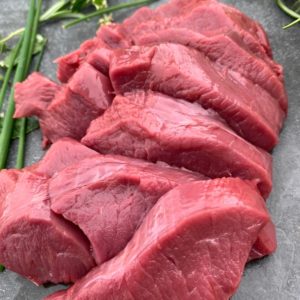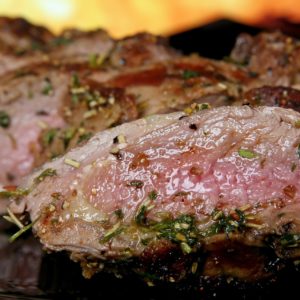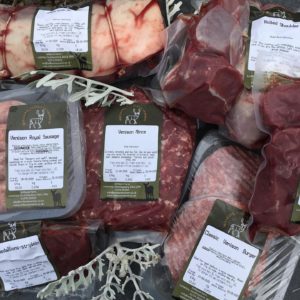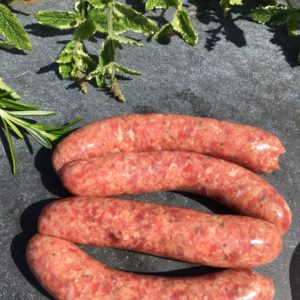Live Deer Sale
Millbank Venison
Sustainable, Ethical, High Animal Welfare, Low Carbon, Nutritious

Parkland Fallow Deer at Millbank
Fallow deer were introduced into Britain from the Mediterranean by the Normans. Initially they were contained within parks but are now found wild in many areas of Britain.
Fallow come in four colours; common, which has spots in the summer but is almost grey in the winter, melanistic which appears almost black, white and menil – the traditional Fallow with prominent white spots throughout the year. All four colour variations are present at Millbank.
The annual cycle begins for the bucks with antler shedding and new antler growth in April, reaching hard antler by August and velvet is clean by September. The rut is generally in October when mating occurs. Gestation is just over 7 months with the does giving birth to fawns in June and July.
They are by nature quite timid and flighty although in the winter months hunger gets the better of them and then they come in close by looking for their daily feed.
Providing you have good deer fences; Fallow deer are very easy to keep. They thrive on good grassland, require no feeding if there is sufficient grass in the summer and only supplementary feeding in the winter to keep their condition. Small groups of Fallow can become relatively quiet over time. They are very “pretty” deer to watch and enjoy.
If you are interested in purchasing Fallow deer we can supply them from October until March. We are also able to diagnose pregnancy in does and de-antler bucks before transport and sale.
Meet our hand reared orphaned fallow buck “Wallace the Great” otherwise known as “Wally”
If you are interested in purchasing sika deer we can supply them from October until March. We are able to pregnancy diagnose hinds and deantler stags before transport and sale.
Parkland Sika Deer
Introduced by the Duke of Bedford to Woburn Abby in the 1800’s. They originate from Japan.
The Sika make a unique noise at rutting, they have “cute facial features with a big black shiny nose. It is argued that they produce the best venison.
The Sika hinds are very friendly and curious, they will always walk over to say “hello”. Males spend most of year alone but will take the opportunity to come and display they majestic splendour and prowess. The sika deer is a highly vocal species, with over 10 individual sounds, ranging from soft whistles to loud screams.
Sika deer are very hardy and easy to keep although they are not as prolific breeders as the fallow.
Farm Assured Farmed Red Deer
Our Farmed red deer are selected for temperament as well as carcass quality and weights. We adhere to a veterinary health plan for our bolus and worming policy and all our hinds are pregnancy scanned.
Our farmed red deer hinds calve in May and early June. For the first few days the calves hide in tall grass and nettles before they find their feet and join the main group. Over the summer we do not intervene with our hinds in any way until worming the calves mid August. We wean the calves mid rut onto lush clean grass pastures and house the calves for the winter 2 weeks later. The calves are wormed and bloused prior to turnout in the spring. Once at grass the yearling stags and hinds are kept in 2 separate groups. Our red calves are finished off grass in the Autumn and marketed via First Venison.
We can be flexible with timings of supply of red deer, since we are able to handle our red deer relatively easily. All our red deer are monitored and managed for performance and temperament.
If you would like to purchase breeding hinds or stags please contact us. All breeding females can be pregnancy scanned. We sell vasectomised males for public deer parks.




